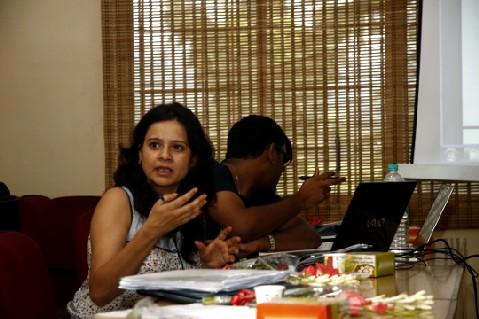Several environmentally ‘unfriendly’ projects in Assam and other Northeast Indian States are being touted as sustainable, receiving funds under the United Nation’s Clean Development Mechanism, wreaking havoc to the ecosystem and the people in its vicinity.
A majority of such projects involve renewal energy projects like dams, solar energy projects and fugitive emission from fuel. However, a large number of projects in Assam and North East have not yet been cleared by Clean Development Mechanism (CDM) and the 30-day window period provided by United Nations Executive Board can be used to register complaints and objections against the project, which can be scrapped if enough public complaints are registered against it.
In the Northeast Indian context about 13 large dams in Arunachal Pradesh alone have been registered or are in the last phase of validation through the CDM framework and in the Assam context The Desang Hydro project in Dibrugarh is also registered at the United Nations CDM Executive Board. These are expected to start any time soon and more so in the wake of the recent World Bank directive.
Ajita Tiwari, facilitator, Indian Network on Ethics and Climate Change ( INECC), while interacting during a consultation on Climate Change, CDM, dams in North East in Guwahati on Wednesday, organised by Centre for Environment, Social and Policy Research (CESPR) said the CDM (Clean Development Mechanism) allows emission-reduction projects in developing countries to earn certified emission reduction (CER) credits, each equivalent to one tonne of CO2.
“These CERs can be traded and sold, and used by industrialized countries to meet a part of their emission reduction targets under the Kyoto Protocol. The CDM has two purposes: it should help industrialised countries to reduce the costs of greenhouse gas abatement and assist developing countries in achieving sustainable development. India is second only to China to host CDM projects,” she explained to the participants, which comprised members of student organisations, academicians, researchers and activists.
She pointed out that voices of the vulnerable often remain unheard, with big companies taking over lands and even threatening locals opposed to such projects.
Explaining about the consultation, convenor, CESPR, Sabita Devi said there is urgent need for public awareness on CDM and its implications on the developmental projects under construction here.
“This is a continuing process, one of the several consultations done in several parts of the state,” she said.
On the other hand, Myron Mendes, senior researcher at Laya, while pointing at some of the key issues related to the CDMs in the Indian context said that these projects have been cornered by giant corporations who skirt sustainable development objectives. Further, the process of stakeholders’ consultation has been heavily flawed, not to miss that the ‘Designated national Authority’ (DNA), which is responsible for host country approval of such projects lacks a clear perspective on sustainable development.
More so, there is a lack of civil society engagement with the CDM process resulting in absence of a collective voice to critique and challenge the role of CDM projects in ensuring sustainable development in the Indian context.
According to Peter Bosshard, Policy Director, International Rivers, “With more than 150 dams proposed for construction and 11 projects in operation, Northeast India is one of the hotspots of global dam building. The biggest project under construction is the Lower Subansiri Dam on the border between the states of Assam and Arunachal Pradesh. Social movements have organized massive protests against the mega-project in the Himalayan foothills over several years. In a huge success, they have just managed to send the turbines for the project back to the sender.”
International Rivers in its report, Mountains of Concrete mentions that the proposed dams in India’s Northeast threaten fragile ecosystems that are rich in biodiversity, and indigenous communities that have protected these ecosystems for many generations. The dams will also have serious downstream impacts on the floodplains of the Brahmaputra in Assam and Bangladesh.
Left with little choice the Planning Commission consituted an Expert Committee headed by Thatte and M.S. Reddy after the Krishak Mukti Sangram Samity (KMSS), an organization representing farmers and other civil bodies intensified their pressure on the government mobilizing mass people with series of protests to stall the 2000 MW NHPC Hydel Power Project along Assam-Arunachal Pradesh.
In May 2013 Assam’s Power Minister Pradyut Bordoloi had urged the centre to consider the recommendations of the Thatte and Reddy Committee Report on the Lower Subansiri Hydro Power Project which opines that the present hydel project on Subansiri contravenes the basic premise of the Brahmaputra Board Act with regard to flood control, irrigation and other benefits. The Minister however assured that the constructions which are on halt for the last six month will begin soon after taking into consideration all the recomendations and corrective measures into account.
The Thatte and Reddy Expert Committee report expresses doubts on the safety designs and the aim of the proposed dam and recommends a review of the dam’s design features considering high levels of seismicity which cannot be brushed aside as inconspicous in an area that falls under Seismic Zone V and may suffer jolts of MSK XI or greater.
The states of Kashmir, the Western and Central Himalayas, the Northeast Indian Region and the Rann of Kutch falls in the Very High Damage Risk Zone (V).







Add new comment